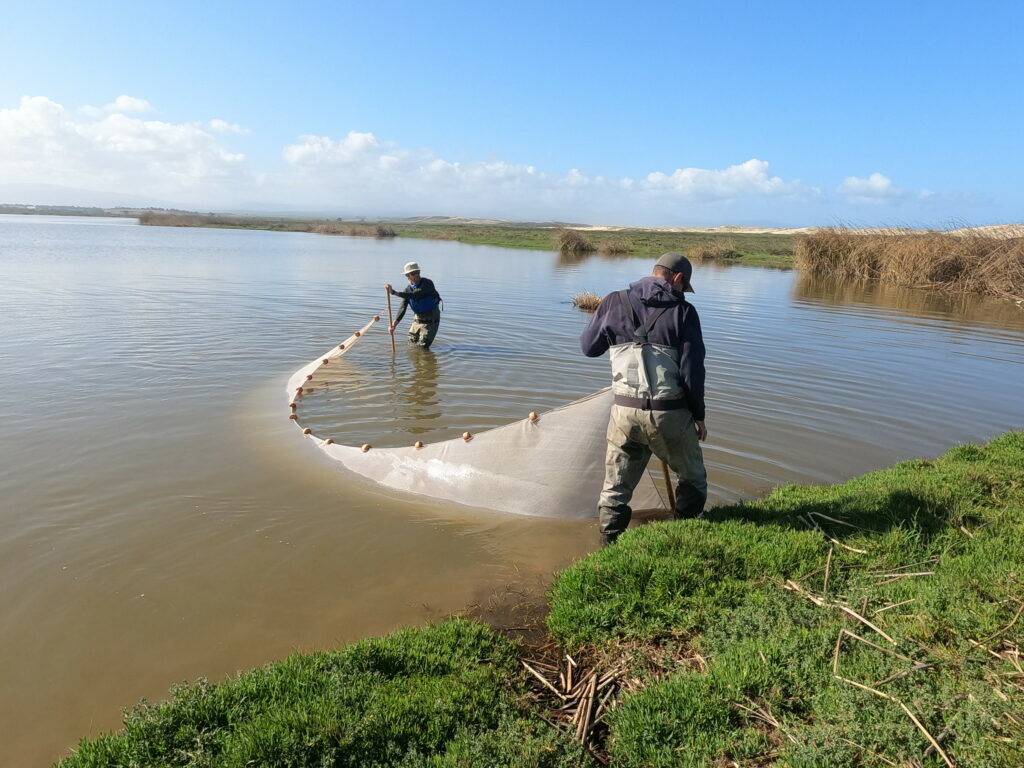


FISHBIO staff have periodically sampled the Salinas River Lagoon to assess the fish community composition and evaluate the distribution of endangered tidewater gobies throughout the lagoon. The lagoon, which is separated from the Pacific Ocean by a sandbar, is a highly dynamic system. River inflow gradually increases the water level in the lagoon until either it breaches naturally by overtopping the sandbar and scouring a channel, or emergency breaches are implemented to prevent flooding of surrounding properties. After a breach, the lagoon remains connected to the marine environment until the sandbar reforms. Salinity levels vary greatly within the lagoon and over time, resulting in substantial changes in the fish community composition.

The overall fish community is generally surveyed using long beach seines at pre-determined locations, while surveys for the federally endangered tidewater goby follow the USFW protocol for the species. Water quality parameters, such as salinity, dissolved oxygen concentration and water temperature are measured at each sampling location. In addition to seining surveys, we also collect environmental DNA (eDNA) samples to improve our chances of documenting rare species, such as juvenile steelhead, which are easily missed using traditional survey methods.

The results from these surveys are informing the creation of a Habitat Conservation Plan (HCP) for the Salinas River Lagoon, which will provide guidelines for future lagoon management. As part of the HCP, long-term permits are expected to be issued by NMFS and the U.S. Fish and Wildlife Service for lagoon management activities (such as facilitated breaching) as well as other operations. Fish distribution surveys are designed to help inform the permit application process and provide information on population resilience to natural and artificial breaching events.
